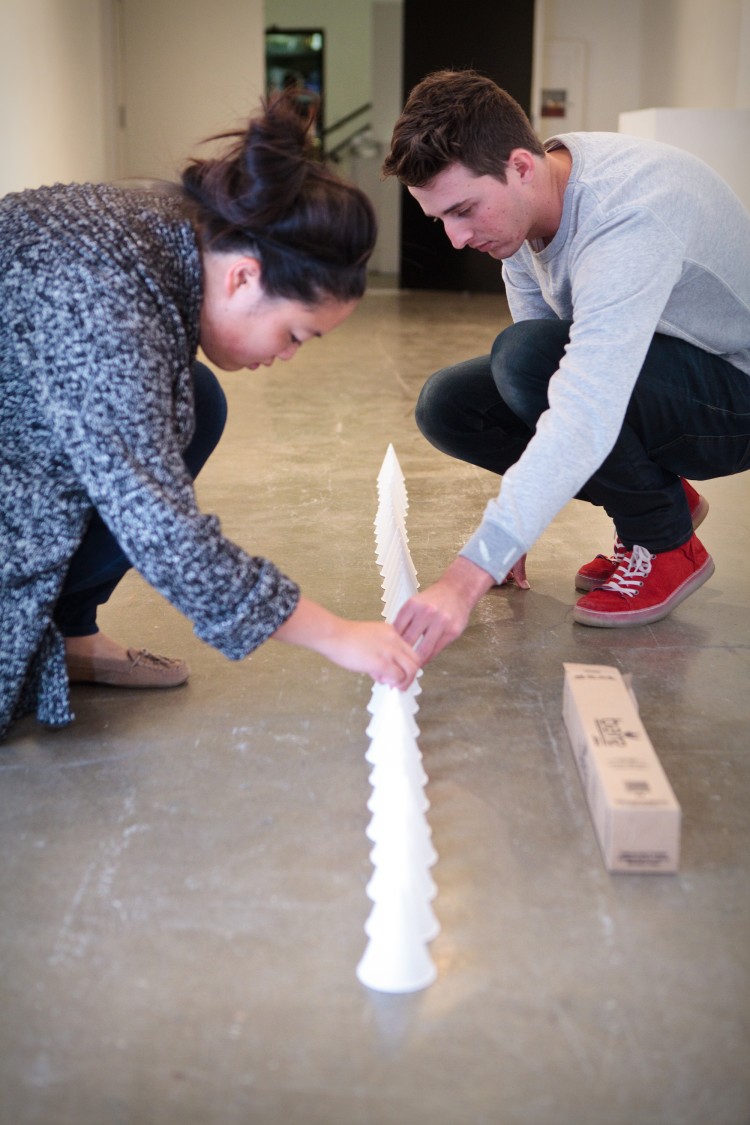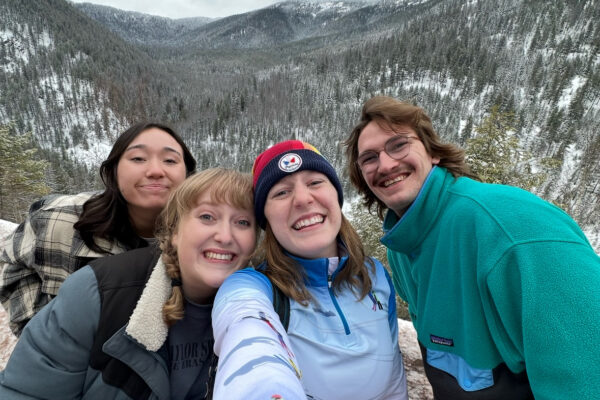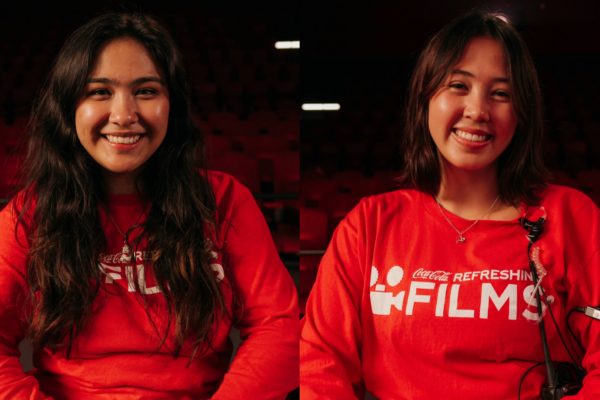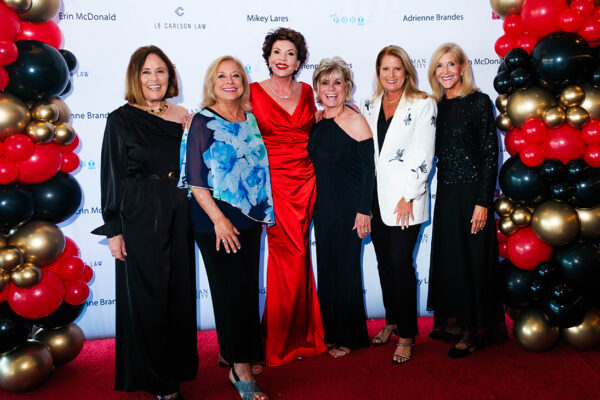In December 1966 the chairman of the Department of Art at then Chapman College mounted an exhibit featuring abstract sculpture created from ordinary objects like ping-pong balls and masking tape, but locked the gallery doors for the holiday break so nobody could see it. And that was precisely the point.

Students Jennifer Seo ’14 and Tyler Park ’12 begin installation of “Everyman’s Infinite Art” at Guggenheim Gallery. (Photo/McKenzi Taylor)
Now Chapman University students are reprising that show, creating each piece of art in the original, and this time the public is invited to visit the Guggenheim Gallery exhibition and consider what the artists of another generation were trying to convey. And that is precisely the point.
Everyman’s Infinite Art
opens with a 5:30 p.m. reception Monday, Nov. 28, and yes, the Guggenheim Gallery doors will in fact be open and the show’s return greeted with refreshments and 1960s music. Admission is free.
The exhibit is one of many in
Pacific Standard Time: Art in L.A., 1945–1980
, an initiative by the Getty Foundation which brings together more than 60 cultural institutions throughout Southern California to tell the story of the rise of the Southern California art scene. Simultaneous exhibitions range from major installations now on view at major museums, including the J. Paul Getty Museum and Los Angeles County Museum of Art, to university galleries throughout the region.
Everyman’s Infinite Art
was Chapman’s choice for the collective art project because it’s an ideal example of the Southern California art world Pacific Standard Time strives to revisit, says Alexandro Segade, coordinator of the Guggenheim Gallery. At the time of its creation,
Everyman’s Infinite Art
was described as a response to the rise of minimalism among the era’s sculptors, most notably Carl Andre who rattled the art world with his controversial and famous sculpture “Lever,” which was a row of firebricks placed on the ground.
When the Chapman show was assembled by artist Harold Gregor, a catalog was published with a list of the each artwork’s components and an almost how-to-assemble-it-yourself description. The concept was that the art didn’t need to be seen, since it could be described and its parts were available to anyone and everyone.
The playfulness was intentional, Segade says.
“It tells us that we have a history of experimentation and pushing boundaries and that this can be done in a way that actually moves the conversation forward and contributes but also is done in a very West Coast playful way. The serious work of making art doesn’t always have to be a pain. And this exhibition shows the humorous intelligence that California art can have,” Segade says.
And thanks to that descriptive catalog still in the department’s archives, the works can be authentically recreated, right down to every last one of the 50 ping-pong balls included, which also allowed it to serve as a student project. Students enrolled in contemporary gallery practices and the sculpture class objects and space will recreate all the works. Pages from the original catalog will be enlarged and displayed on the gallery walls.
They are taking pains to be precise with the recreations, but because the show has new hands assembling it and a real audience to view it, it will be a slightly different animal. Even Gregor has moved on to other things and is now a photo realist painter living in Illinois. Once again, it’s part of the point of the project, Segade says.
“It does have a funny relationship to the viewer because it is so conceptual,” Segade says. “But I would argue that because we are mounting it for the first time since 1966 and because there’s more here than even the original artist could foresee, it’s definitely worth checking out.”
Admission to the Monday, Nov. 28, reception is free. For more information about
Pacific Standard Time
, visit
www.pacificstandardtime.org
.




Add comment